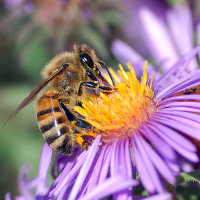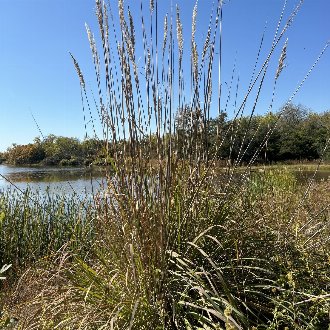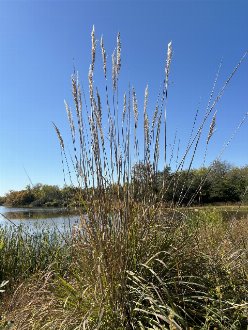Ravennagrass (Tripidium ravennae (L.) H.Scholz)
Also known as plume grass, elephant grass, hardy pampas grass; also classified as Saccharum ravennae (L.) L., Erianthus ravennae (L.) P.Beauv., Ripidium ravennae (L.) Trin.
↑Summary
A large clumping grass, invasive in much of North America.
↑Range - Expand
| Legend | Color |
| Introduced or Not Present | |
| Introduced |
This tentative map is based on our own research. It may have limited data on Canada and/or Mexico, and there is some subjectivity in our assignment of plants as introduced vs. expanded. Read more in this blog post.
Although this plant occurs somewhere in each of these regions, it may only occur in a small part of some or all of them.
↑Control
This species is difficult to control; its large size and aggressive root system makes it hard to control without causing some negative environmental impact. The best approach to control is prevention. Although this species is not planted much any more, existing plantings are widespread in landscaping. Removing these plantings from managed landscapes, where it is easier and more accessible to remove it, is important to prevent colonization of new habitats and/or re-colonization anywhere it is removed.
Clumps can be dug up, but this process is resource-intensive because of how large this plant is. Plants can resprout from rhizome fragments remaining in the soil. The leaf blades can be irritating, so gloves and protective clothing are necessary when working with this plant. We could not find information on herbicide's effectiveness on this species.
This species has high sunlight needs and is only short-rhizomatous, so it is possible to kill clumps without disturbing the soil by covering them to blocks out light. However, because it is robust, it maybe be able to push up through thinner coverings.
On sites where it is not possible to immediately kill all plants, it is important to remove flowering stems before they produce seed. It is ideal to cut the stalks just as they start flowering, so they can be left on-site and do not need to be removed; if seed is allowed to mature, it must be disposed of safely as the seed could risk spreading it to more sites. This species typically will resprout and attempt to bloom a second time if the initial stalk is removed, so typically, follow-up is required even to prevent it from producing seed in a single season.
One-time or occasional mowing or weed-whacking of foliage can weaken or slow the growth of clumps but usually will not kill them unless it is done regularly. This species cannot survive regular mowing.
↑Uses
This species has been sold and planted as an ornamental grass. Nurseries often label it with the older name Erianthus ravennae in spite of that name not having been by the scientific community for a long time, and misleadingly call it "hardy pampas grass" due to its superficial resemblance to that genus. It has also been planted, historically, for erosion control.
Both of these uses have fallen out of favor because of its invasiveness.
We recommend against planting this grass anywhere in North America as it is invasive and can be difficult to remove once it establishes in an area.
↑Notes
We recommend against the use of the common name "elephant grass" because it more frequently is used to refer to elephant grass (Pennisetum purpureum), and also, less-frequently, to refer to giant reed (Arundo donax).
We also recommend against the common name "hardy pampas grass"; this species is not in the same genus as true pampas grasses such as Uruguayan pampas grass (Cortaderia selloana) or purple pampas grass (Cortaderia jubata).
↑Links & External Resources
• Saccharum ravennae (ravennagrass) | USDA PLANTS Database (About This Site)
• Ravenna Grass | iNaturalist (About This Site)
• Saccharum ravennae (Plume Grass) | Missouri Botanical Garden Plant Finder (About This Site)
• Saccharum ravennae | Biota of North America Project (BONAP) (About This Site)
• Tripidium ravennae | NatureServe Explorer (About This Site)
• Saccharum ravennae | Flora of North America (About This Site)
• Ravennagrass | Maryland Biodiversity Project (About This Site)
• Tripidium ravennae (L.) Scholz (Ravenna-grass) | Digital Atlas of the Virginia Flora (About This Site)




